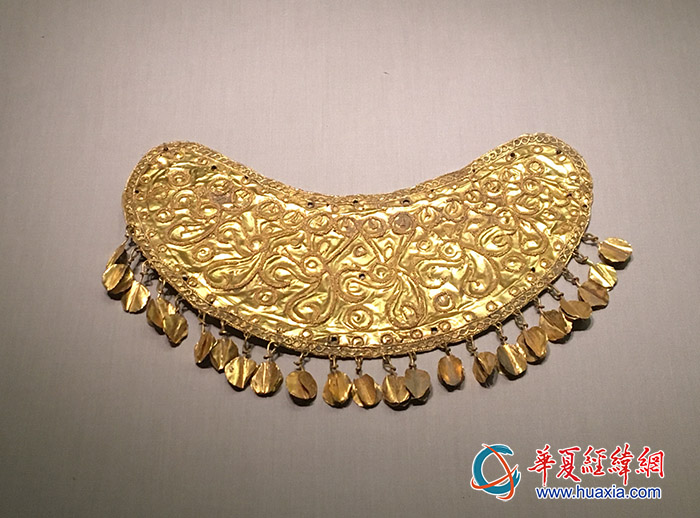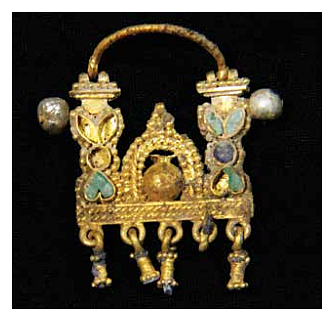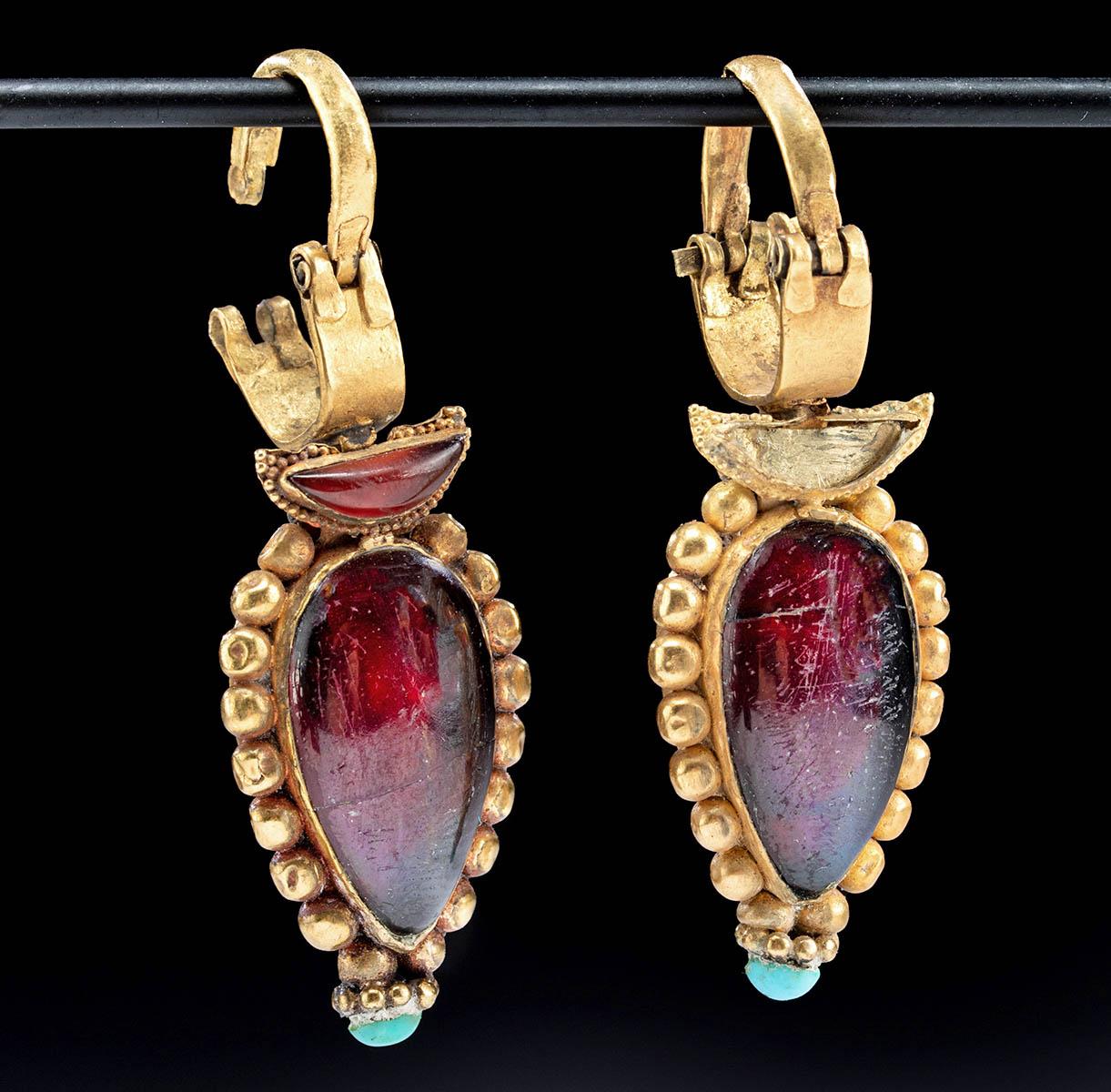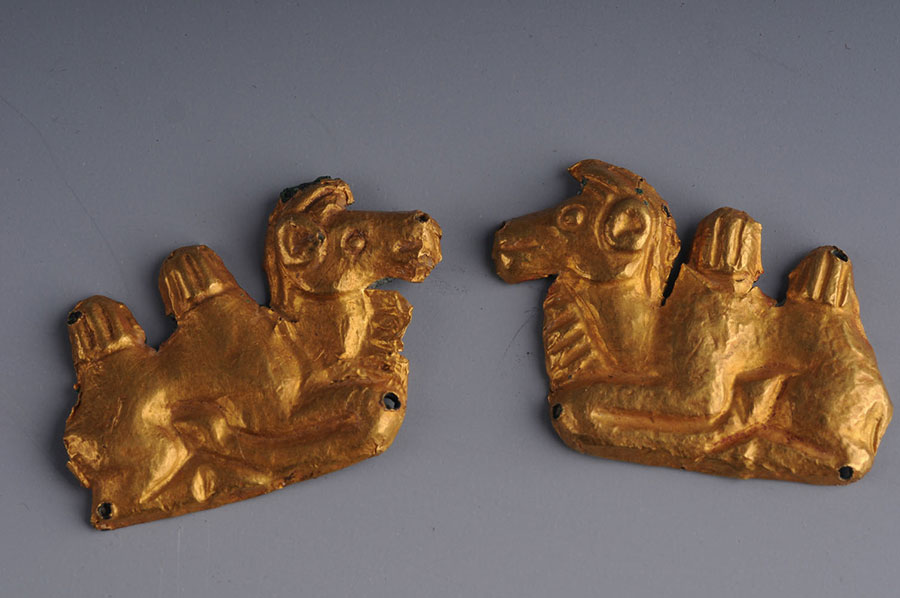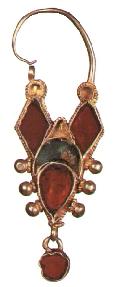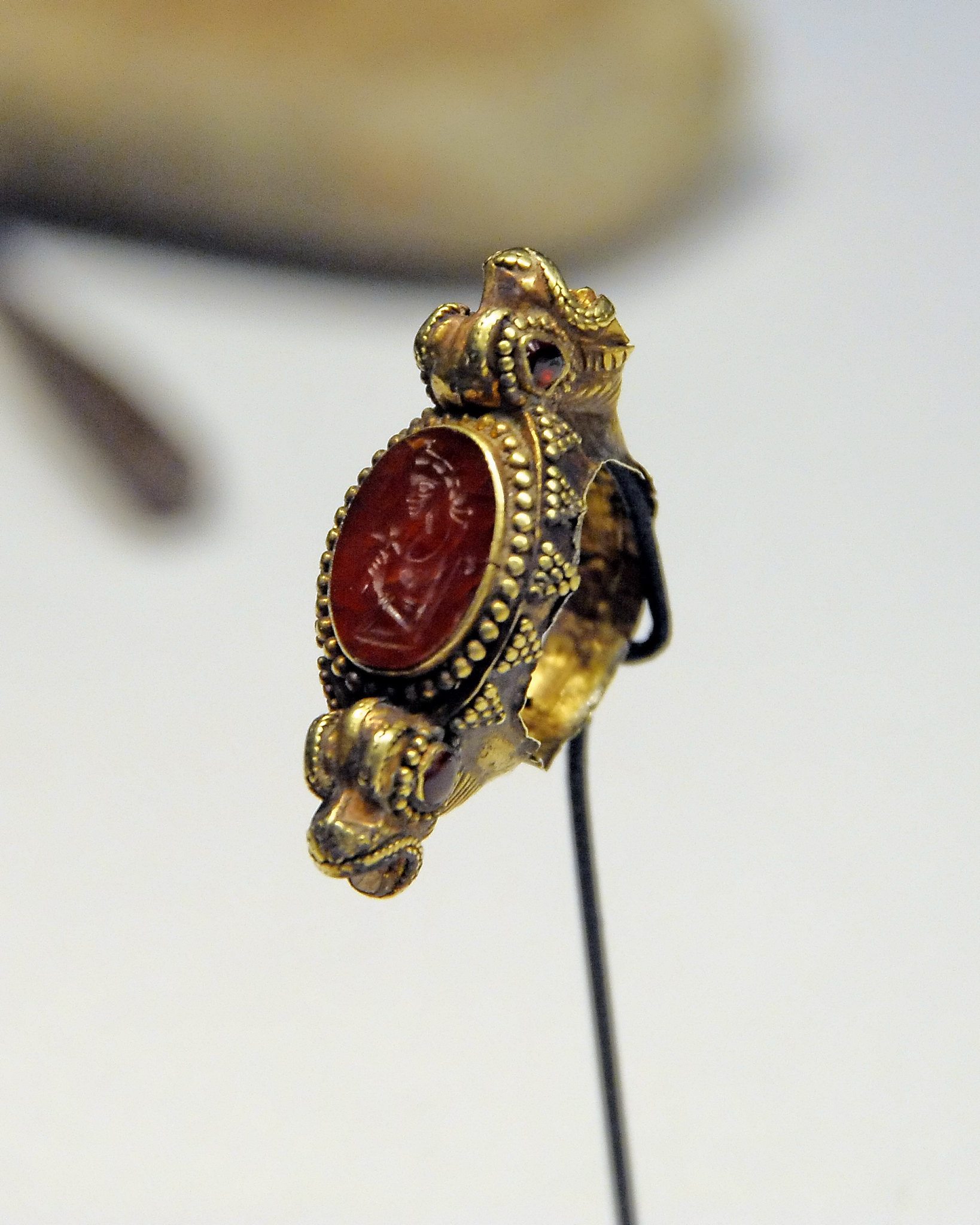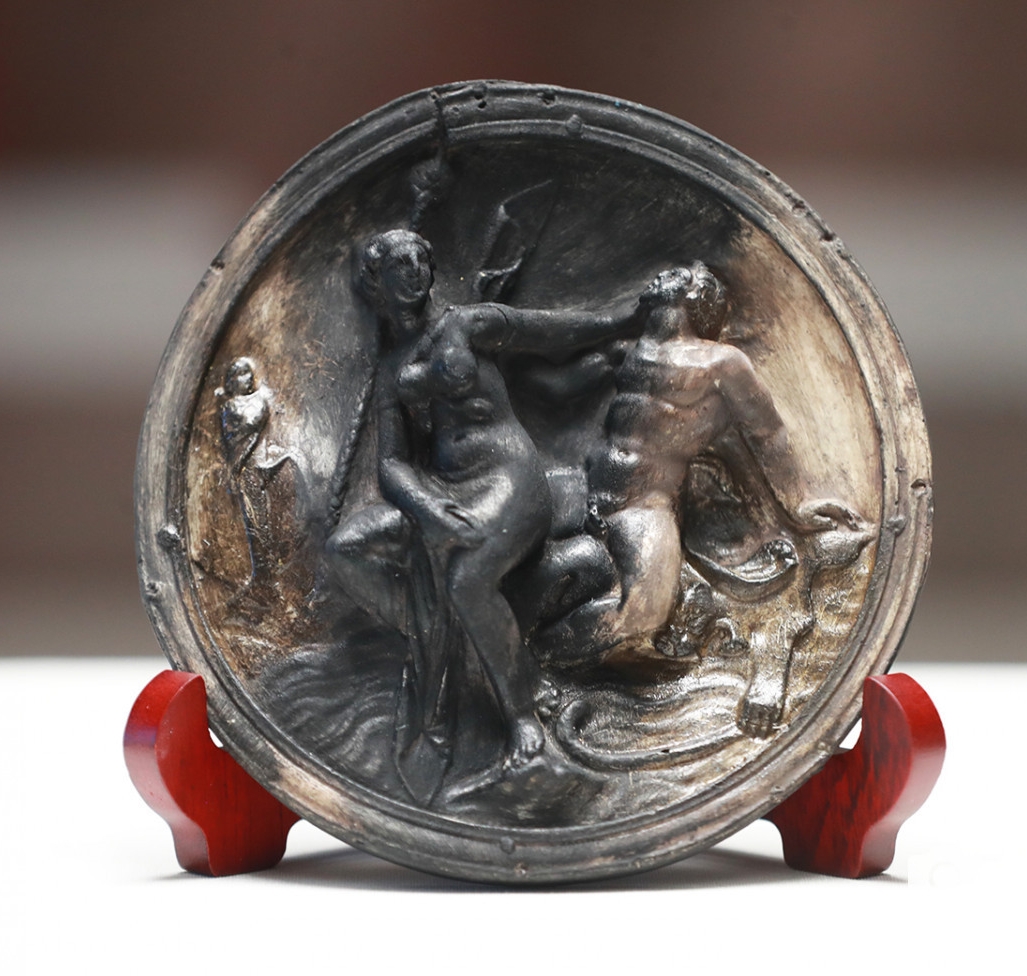Tomb 9 at the Xiongnu cemetery Tamir 1 site in Mongolia was discovered in 2005 by archaeological expedition of the Silkroad Foundation of Saratoga, California, U.S.A. and the Mongolian National University, Ulaanbataar.
The tomb was robbed twice before, only a gold earring (photo below), a turquoise jewelry setting, three cast glass beads, fragments of a bronze mirror, and various iron objects have survived. [Purcell, Spurr]
This burial site was used from the 1st century BCE to the 1st century CE.

(a) Tamirin ulaan hushuu, Tamir 1, tomb 109 [the earring is photographed horizontally]
(b) Tevsh uul tomb 1
After Bryan K. Miller, pp. 302-303
“Gold earrings with settings for stones, now lost, have been found at several sites, and small turquoise stones meant for insets have conversely been found” [B. K. Miller]
The earring from Tamirin ulaan hushuu tomb 109 is photographed horizontally, the loop is on the left side. This kind of attachment would suggest rather a pendant or a temple-earring than a typical earring. [IMHO]
“Khünnü/Xiongnu golden earring from Tamiryn Ulaan Khoshuu” CSEN on Twitter

Photo after T. Turbat, B. Noost

Photo after T. Turbat, B. Noost
The gold earring found in the male burial, grave No. 37 of TUH [Tamirin ulaan hushuu]
“3×1.5 cm in size, the upper part of the earring is made into an oval shape, and the outside of the earring is made with a small balloon.
If it is fenced with a pattern, the two sides will form a ring on the number side and a small bubble pattern welded on the number side, upper side.
Inside the oval there was a stone inlay, but the stone gone.” [T. Turbat, B. Noost, p. 175]
“The latest research status of Mongolian Xiongnu relics by Mongolian researchers” (Auto-translated from Korean. See the original PDF at the bottom of the page).
“The tomb of Tamirin ulaan hushuu [Ulaan Khoshuu] Xiongnu was excavated from 2013 to 2017, and there were 30 tombs from the Xiongnu period. About 500 various relics have been excavated. The tomb faces the burial to the east, and the custom of burial of horse bones is rarely found, in general Xiongnu tombs and burial methods, such as more earthenware than weapons make a difference. The excavated items include various gold and silver ornaments, harness decorations, weapons, household items, and earthenware. In particular, the artistic characteristics of gold artifacts from the Xiongnu period can be explored through various types of gold ornaments.”

Photo source MONGOLIAN ARCHAEOLOGY (Монголын археологи) @Mon_Archaeology https://twitter.com
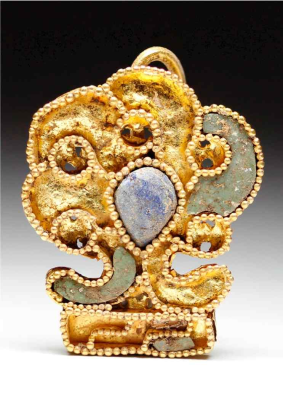
Photo from the Korean article “The latest research”

Photo by L. Buyanaa https://montsame.mn/en
“In an effort to characterize the people who composed the groups known as the Xiongnu, nuclear and whole mitochondrial DNA data were generated from the skeletal remains of 52 individuals excavated from the Tamir Ulaan Khoshuu (TUK) cemetery in Central Mongolia. This burial site, attributed to the Xiongnu period, was used from the first century BC to the first century AD. Kinship analyses were conducted using autosomal and Y-chromosomal DNA markers along with complete sequences of the mitochondrial genome. These analyses suggested close kin relationships between many individuals. Nineteen such individuals composed a large family spanning five generations. Within this family, we determined that a woman was of especially high status; this is a novel insight into the structure and hierarchy of societies from the Xiongnu period. Moreover, our findings confirmed that the Xiongnu had a strongly admixed mitochondrial and Y-chromosome gene pools and revealed a significant western component in the Xiongnu group studied. Using a fine-scale approach (haplotype instead of haplogroup-level information), we propose Scytho-Siberians as ancestors of the Xiongnu and Huns as their descendants.” [Genetic evidence]
SOURCES
- Power Politics in the Xiongnu Empire, Bryan K. Miller, University of Pennsylvania 2009 https://core.ac.uk/download/pdf/76382562.pdf
- Xiongnu Culture of the Tamiryn Ulaan Khoshuu. Ulaanbaatar 2021, Tsagaan Turbat, Bayarkhuu Noost
https://www.academia.edu/92472910/Xiongnu_Culture_of_the_Tamiryn_Ulaan_Khoshuu_Ulaanbaatar_2021 - Korean article “The latest research status of Mongolian Xiongnu relics by Mongolian researchers” source https://www.cha.go.kr
- Archaeological Investigations of Xiongnu Sites in the Tamir River Valley. Results of the 2005 Joint American-Mongolian Expedition to Tamiryn Ulaan Khoshuu, Ogii nuur, Arkhangai aimag, Mongolia;
David E. Purcell and Kimberly C. Spurr, Flagstaff, Arizona (USA) - Genetic evidence suggests a sense of family, parity and conquest in the Xiongnu Iron Age nomads of Mongolia
DOI : 10.1007/s00439-020-02209-4 - Xiongnu Y-DNA connects Huns & Avars to Scytho-Siberians https://indo-european.eu/2020/08/xiongnu-ancestry-connects-huns-avars-to-scytho-siberians/
http://m.hyinsantv.com/view.php?idx=132587
http://archeologyofmongolia.blogspot.com/2011/03/blog-post_31.html



